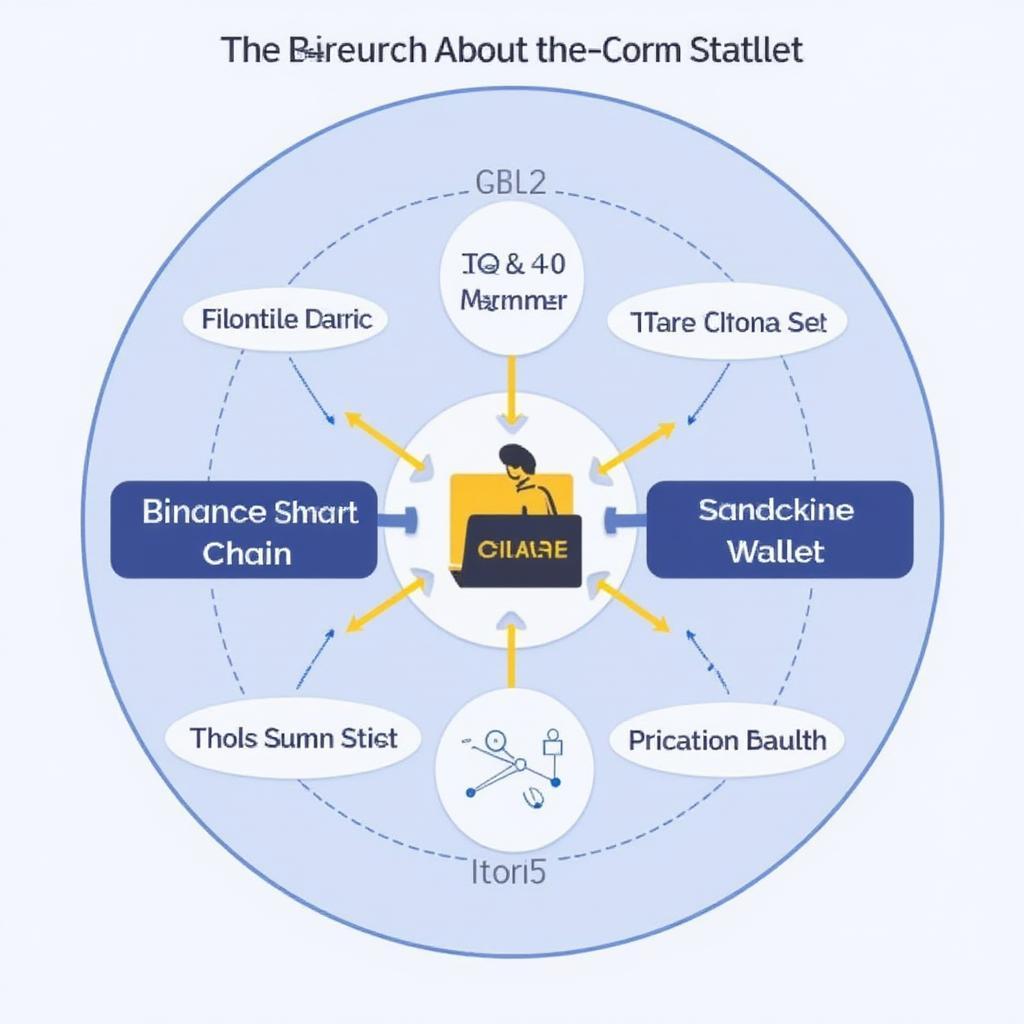Binance Smart Chain (BSC): A Comprehensive Guide for Investors

The Binance Smart Chain (BSC) has rapidly emerged as a prominent player in the decentralized finance (DeFi) landscape. This guide delves deep into BSC, exploring its functionalities, advantages, risks, and potential for long-term investment. We’ll cover everything from its underlying technology to its growing ecosystem of decentralized applications (dApps).
Understanding the Binance Smart Chain Ecosystem
BSC operates as a parallel blockchain to the Binance Chain, focusing on smart contract functionality and compatibility with the Ethereum Virtual Machine (EVM). This compatibility allows developers to easily port existing Ethereum-based dApps to BSC, leveraging its faster transaction speeds and lower fees. The dual-chain architecture allows users to seamlessly transfer assets between the two chains, benefiting from the strengths of both.
Key Features of BSC
- EVM Compatibility: BSC’s compatibility with the Ethereum Virtual Machine allows for seamless migration of dApps and tools. This significantly reduces the development barrier and fosters rapid innovation.
- Proof-of-Staked Authority (PoSA) Consensus: BSC utilizes a PoSA consensus mechanism, which relies on a select number of validators to secure the network. This results in faster block times and lower transaction fees compared to Proof-of-Work (PoW) blockchains like Bitcoin or Ethereum.
- Cross-Chain Compatibility: The ability to transfer assets between Binance Chain and BSC enables users to access a wider range of functionalities and services. This interoperability enhances the overall user experience and expands the possibilities within the Binance ecosystem.
- Low Transaction Fees: BSC boasts significantly lower transaction fees than Ethereum, making it a more accessible platform for users and developers, particularly for microtransactions and high-frequency trading.
DeFi on Binance Smart Chain: A Booming Landscape
BSC has become a hotbed for DeFi projects, attracting developers and users seeking alternatives to Ethereum’s high gas fees. The platform offers a diverse range of DeFi applications, including decentralized exchanges (DEXs), lending and borrowing platforms, yield farming protocols, and stablecoins. This vibrant ecosystem provides ample opportunities for users to participate in various DeFi activities and potentially earn high returns.
Exploring Popular BSC dApps
- PancakeSwap: A leading DEX on BSC, PancakeSwap allows users to swap BEP-20 tokens, provide liquidity to earn trading fees, and participate in yield farming.
- Venus Protocol: A decentralized money market on BSC, Venus enables users to borrow and lend crypto assets, as well as mint synthetic stablecoins.
- Autofarm: A yield aggregator that automatically optimizes yield farming strategies across multiple BSC protocols, maximizing returns for users.
Risks and Considerations for BSC Investors
While BSC offers numerous advantages, it’s crucial to acknowledge the associated risks:
- Centralization Concerns: The PoSA consensus mechanism relies on a limited number of validators, raising concerns about centralization and potential vulnerabilities.
- Smart Contract Risks: As with any blockchain platform, smart contracts on BSC are susceptible to bugs and vulnerabilities that could be exploited by malicious actors.
- Regulatory Uncertainty: The regulatory landscape for cryptocurrencies and DeFi is still evolving, and future regulations could impact the operation and adoption of BSC.
“Investors should diligently research individual projects and understand the underlying risks before participating in the BSC ecosystem,” advises Dr. Amelia Hernandez, a leading blockchain researcher at the Institute for Decentralized Finance.
The Future of Binance Smart Chain
BSC is continuously evolving, with ongoing developments focused on improving scalability, security, and decentralization. The platform’s strong community and active development team suggest a promising future for BSC in the rapidly evolving DeFi landscape. Innovations like layer-2 scaling solutions and cross-chain interoperability enhancements are expected to further strengthen BSC’s position in the market.

Conclusion
The Binance Smart Chain presents a compelling alternative to Ethereum for developers and users seeking a faster and more affordable platform for DeFi. While risks exist, the platform’s robust ecosystem, continuous innovation, and strong community suggest a promising future for BSC. Investors should conduct thorough research and understand the associated risks before participating in the Binance Smart Chain ecosystem. Understanding the fundamentals of BSC is crucial for navigating the exciting world of decentralized finance and making informed investment decisions.
FAQ
- What is the difference between Binance Chain and Binance Smart Chain? Binance Chain focuses on fast trading, while Binance Smart Chain supports smart contracts and dApps.
- What is BEP-20? BEP-20 is the token standard on Binance Smart Chain, similar to ERC-20 on Ethereum.
- How do I connect to Binance Smart Chain? You can connect to BSC using a compatible wallet like MetaMask or Trust Wallet.
- What are the gas fees on Binance Smart Chain? Gas fees on BSC are significantly lower than on Ethereum.
- Is Binance Smart Chain decentralized? BSC uses a PoSA consensus mechanism with a limited number of validators, raising some centralization concerns.
- What are the risks of using Binance Smart Chain? Risks include smart contract vulnerabilities, potential centralization issues, and regulatory uncertainty.
- How can I buy BNB for use on Binance Smart Chain? You can buy BNB on various cryptocurrency exchanges, including Binance.
- What is the future of Binance Smart Chain? BSC is continuously evolving with a focus on scalability, security, and decentralization.




